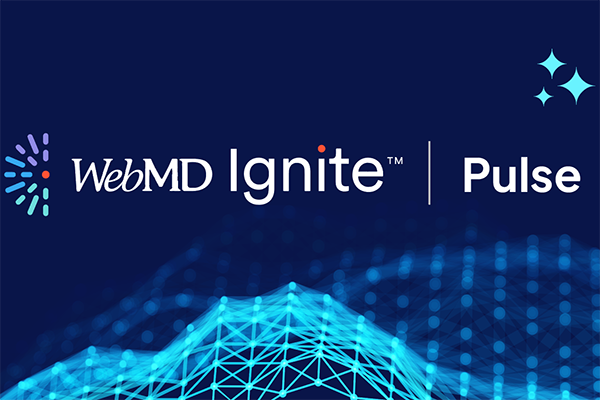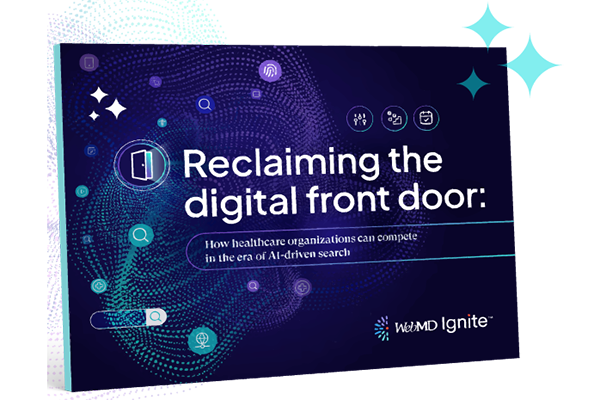Unlock the Value of Claims Data for Better Market Intelligence

Categories: health systems, healthcare organizations
Editor's Note: This blog was published prior to the transition to WebMD Ignite.
Think of a claim as a diamond in the rough. In its original state, a diamond has imperfections and obscurities. With the right preparation, polish, and setting, its true worth shines through. What follows is a practical yet sophisticated approach to turning the raw material of claims data into strategically curated data assets, revealing the valuable insights within.
Start with the most complete data set available
Bear in mind that there is no such thing as a perfect claims data set and there never will be. All markets have gaps in available data due to domination by certain payers, providers that may not be sharing information, and self-pay activity. So, your focus should be on getting the greatest possible value from the claims data that you can get. Think quality as much as quantity.
One of the biggest challenges with claims data at the aggregate level is the availability of outpatient data. Surgical procedures have shifted over the past 10 years to the point wherein some markets more than half of them now occur on an outpatient basis. Some states mandate this reporting, but many do not, resulting in a notable black hole for the aggregate data. Having a reliable source of outpatient claims is critical to understanding the whole picture of your market.
Work around the limitations at the claims line level
Keep in mind that the purpose of a claim is for a provider of care to get reimbursed by a payer. A pre-adjudicated claim form, or 837 as it is known in the industry, has about 170 data points. Only eight are required for the provider to get paid. What this means is that in the sea of available claims, a significant number of them are incomplete or even inaccurate.
In a perfect world, we’d go back and fill in every one of those 170 points correctly, but that’s not possible. Instead, we use advanced data science methodologies to enhance the data we do have, analyze it with new approaches to the imputation of logical relationships, and recalibrate it in ways that help answer key business questions with a high degree of accuracy.
One example of this is referral data, which is often not populated in claims. Traditionally, inferred referrals have been determined by a CMS-driven shared patient logic standard which said that if a patient walked into Primary Care A and then walked into Surgeon B within a predefined number of days later, we infer that a referral relationship exists between that primary care physician and that surgeon. It might be true, but oftentimes it isn’t.
Given the strategic importance of optimizing network utilization, it therefore makes sense to take a more rigorous approach to ascertaining the accuracy of referral data. This is done through an advanced algorithm that examines recent visits and diagnoses, identifies eligible referring events based on the diagnoses documented and procedure codes billed, timing and order of events, and treating provider speciality. The algorithm then logically selects the best series of clinical encounters to map together related patient activity and referral patterns.
Glean market intelligence from claims data and accelerate strategic decisions
Developing and nurturing long term customer relationships depends on understanding buying behavior. But the privacy requirements associated with healthcare data make it challenging to get a clear picture of patient movement through a care episode.
However, the technique of tokenization creates a longitudinal view of a patient that is HIPAA compliant. We then apply data science methods, including case logic, to these longitudinal views and gain insights into patient behavior that would otherwise be unavailable.
This sets us up to gain even greater clarity into the whole episode of care. Looking backwards at pre-episode services, such as an orthopedic visit and an MRI procedure ahead of a “trigger event” knee replacement surgery, for example, we gain an understanding of patient behavior related to sites of care and providers. Likewise, looking ahead to related post-episode services, such as home health and physical therapy, gives us more information about patient choice.
These in-depth insights into the patient’s journey provide far sharper market intelligence than legacy claims data, helping to answer key business questions related to site locations, practice acquisition efforts, and competitor activities.
It’s just the beginning
We are only scratching the surface of the use cases for strategically curated claims data assets. In today’s abruptly evolving landscape of healthcare, provider organizations need every market insight available in order to achieve their mission to care. Working with the right technology partner to harness the hidden value in claims data makes all the difference.




